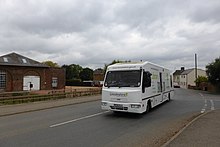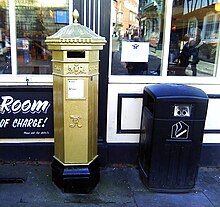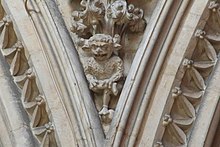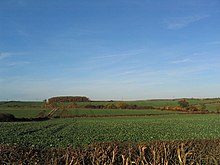Welcome to Visit Lincolnshire Places
The Walkfo guide to things to do & explore in Lincolnshire
![]() Visit Lincolnshire places using Walkfo for free guided tours of the best Lincolnshire places to visit. A unique way to experience Lincolnshire’s places, Walkfo allows you to explore Lincolnshire as you would a museum or art gallery with audio guides.
Visit Lincolnshire places using Walkfo for free guided tours of the best Lincolnshire places to visit. A unique way to experience Lincolnshire’s places, Walkfo allows you to explore Lincolnshire as you would a museum or art gallery with audio guides.
Visiting Lincolnshire Walkfo Preview
Lincolnshire (abbreviated Lincs.) is a county in the East Midlands of England, with a long coastline on the North Sea to the east . The county town is the city of Lincoln, where the county council has its headquarters . The ceremonial county consists of the non-metropolitan county of Lincolnshire and the area covered by the unitary authorities of North and North East Lincolnshire . When you visit Lincolnshire, Walkfo brings Lincolnshire places to life as you travel by foot, bike, bus or car with a mobile phone & headphones.
Lincolnshire Places Overview: History, Culture & Facts about Lincolnshire
Visit Lincolnshire – Walkfo’s stats for the places to visit
With 12 audio plaques & Lincolnshire places for you to explore in the Lincolnshire area, Walkfo is the world’s largest heritage & history digital plaque provider. The AI continually learns & refines facts about the best Lincolnshire places to visit from travel & tourism authorities (like Wikipedia), converting history into an interactive audio experience.
Lincolnshire history

During pre-Roman times, most of Lincolnshire was inhabited by the Corieltauvi people. The language of the area at that time would have been Common Brittonic, the precursor to modern Welsh. Large numbers of Germanic speakers from continental Europe settled in the region following the withdrawal of the Romans.
Lincolnshire culture & places

Lincolnshire is a rural area where the pace of life is generally slower than in much of the United Kingdom. Sunday is still largely a day of rest, with only shops in Lincoln, larger market towns, and resorts and industrial towns of the North Sea coast generally remaining open. Fishing (in the extensive river and drainage system in the fens) and shooting are popular activities.
People
Those born in Lincolnshire are sometimes given the nickname of Yellowbellies . The origin of this term is debated, but is most commonly believed to derive from the uniform of the 10th Regiment of Foot (later the Lincolnshire Regiment) The coat of arms of Lincolnshire County Council is supported by two officers of the regiment .
Notable people

The following list of notable people associated with Lincolnshire is arranged chronologically by date of birth. Guthlac of Crowland (674–715), Christian saint Æthelhard (8th century-805), Archbishop of Canterbury Hereward the Wake (c.1035-c.1072), Anglo-Saxon nobleman Lucy of Bolingbroke (1074–1136), countess of Chester Gilbert of Sempringham (c.1085–1190), Saint and Founder of the Gilbertine Order Aaron of Lincoln (c.1125–1186), financier Hugh of Lincoln (1135/40-1200), Bishop of Lincoln Stephen Langton (c.1150–1228), Archbishop of Canterbury Nicolaa de la Haye (c.1150–1230), landowner and administrator Robert Grosseteste (c.1175–1253), Bishop of Lincoln Berechiah de Nicole (c.1210-c.1270), Tosafist Eleanor of Castile (1241–1290), wife of Edward I Little Saint Hugh of Lincoln (1246–1255), blood libel victim Katherine Swynford (c.1350–1403), third wife of John of Gaunt Henry IV of England (1367–1413), King of England Richard Foxe (1458–1528), bishop and founder of Corpus Christi College, Oxford John Taverner (c1490-1545), composer and organist John Whitgift (c.1503–1604), Archbishop of Canterbury John Foxe (c.1516–1587), author of Foxe’s Book of Martyrs William Cecil, 1st Baron Burghley (1520–1598), Chief Advisor to Queen Elizabeth I Anne Askew (1521–1546), Protestant martyr William Byrd (1539–1623), composer John Smyth (c.1554-c.1612), founder of the Baptist denomination Robert Tighe (1562–1620), cleric and linguist Francis Meres (1565/1566-1647), churchman and author Captain John Smith (1580–1631), leader of the settlement of Jamestown, Virginia John Cotton (1585–1652), clergyman Anne Bradstreet (1612–1672), poet John Leverett (1616-1678/79), penultimate governor of the Massachusetts Bay Colony Simon Patrick (1626–1707), English theologian and bishop Sir Isaac Newton (1642–1726), mathematician and physicist John Harrison (1693–1776), chronometer innovator William Stukeley (1687–1765), antiquarian John (1703–1791) and Charles Wesley (1707–1788), founders of the Methodist movement Benjamin Huntsman (1704–1776), inventor of crucible steel Thomas Paine (1737–1809), political activist and philosopher Joseph Banks (1743–1820), botanist and naturalist Samuel Eyles Pierce (1746–1829), preacher and theologian Thomas Scott (1747–1821), Bible commentator and co-founder of the Church Missionary Society George Bass (1771-c.1803), explorer of Australia Matthew Flinders (1774–1814), navigator and cartographer Richard Watson (1781–1833), theologian and Methodist writer George Davenport (1783–1845), sailor and frontiersman Peter De Wint (1784–1849), landscape painter Pishey Thompson (1784–1862), publisher and antiquarian writer Sir John Franklin (1786–1847), Arctic explorer Andreas Kalvos (1792–1869), poet Christopher Wordsworth (1807–1885), Bishop of Lincoln Alfred Lord Tennyson (1809–1892), poet Herbert Ingram (1811–1860), journalist Lady Charlotte Guest (1812–1895), businesswoman and Welsh language translator George Boole (1815–1864), mathematician William Marwood (1818–1883), hangman Jean Ingelow (1820–1897), poet Charles Frederick Worth (1825–1895), fashion designer Edward King (1829–1910), Bishop of Lincoln Charlotte Alington Barnard (1830–1869), ballad composer and hymn writer Joseph Ruston (1835–1897), engineer and manufacturer Arnold Rylott (1839–1914), cricketer for Marylebone Cricket Club George Green (Medal of Honor) (1840–1898), Medal of Honor recipient Gonville Bromhead (1845–1891), Victoria Cross recipient Madge Kendal (1848–1935), actress Ethel Rudkin (1893–1985), folklorist and archaeologist Sarah Swift (1854–1937), Royal College of Nursing founder Frank Bramley (1857–1915), artist Adrian Woodruffe-Peacock (1858–1922), clergyman and ecologist William Robertson (1860–1933), Field Marshal Halford Mackinder (1861–1947), geographer Thomas Colclough Watson (1867–1917), Victoria Cross recipient Cyril Bland (1872–1950), cricketer William Tritton (1875–1946), tank developer Frank Pick (1878–1941), railway administrator Sybil Thorndike (1882–1976), actress Alfred Piccaver (1884–1958), tenor Arthur Lucan (1885–1954), part of the music hall act Old Mother Riley Frank Airey (1887–?), footballer Harold Jackson (VC) (1892–1918), Victoria Cross recipient Charles Richard Sharpe (1889–1963), Victoria Cross recipient Francis Hill (1899–1980), historian Frank Whittle (1907–1996), RAF officer John George Haigh (1909–1949), serial killer Douglas Bader (1910–1982), RAF flying ace James Cobban (1910–1999), educator and headmaster Chad Varah (1911–2007), priest and “The Samaritans” founder Ted Savage (1912–1964), footballer Guy Gibson (1918–1944), bomber pilot and Victoria Cross recipient Steve Race (1921–2009), musician and broadcaster Liz Smith (1921–2016), actress Leslie Manser (1922–1942), bomber pilot and Victoria Cross recipient Brian Tierney (1922–2019), historian Nicholas Parsons (1923–2020), radio and TV presenter Neville Marriner (1924–2016), violinist and conductor Margaret Thatcher (1925–2013), former Prime Minister Elizabeth Jennings (1926–2001), poet Brenda Fisher (born 1927), swimmer Joan Plowright (born 1929), actress Jeff Hall (1929–1959), footballer Colin Dexter (1930–2017), crime writer Bill Podmore (1931–1994), television producer Neil McCarthy (1932–1985), actor Frank Sargeant (born 1932), retired Anglican bishop Mervyn Winfield (1932–2014), cricketer Bernard Codd (1934–2013), motorcycle road racer Victor Emery (1934–2002), physicist Mike Pinner (born 1934), football goalkeeper Bruce Barrymore Halpenny (born 1937), military historian and author Roy Axe (1937–2010), car designer Barry Spikings (born 1939), Hollywood producer Ted Lewis (1940–1982), crime writer John Alderton (born 1940), actor Alec Brader (MBE) (born 1942) professional footballer, schoolteacher and youth athletics coach Graham Oates (born 1943), footballer John Hargreaves (born 1944), cricketer Tony Jacklin (born 1944), golfer Roger Scruton (1944–2020), philosopher Robert Wyatt (born 1945), musician Patricia Hodge (born 1946), actress Iain Matthews (born 1946), singer-songwriter and musician Philip Priestley (born 1946), former British diplomat Richard Budge (1947–2016), coal mining entrepreneur Ray Clemence (born 1948), football goalkeeper Jim Broadbent (born 1949), actor Geoff Capes (born 1949), shotputter Rod Temperton (1949–2016), songwriter Bernie Taupin (born 1950), songwriter Brian Bolland (born 1951), comics artist David Ward (born 1953), former Member of Parliament (MP) Michael Foale (born 1957), astronaut Jennifer Saunders (born 1958), actress and comedian Chris Woods (born 1959), football goalkeeper Lee Chapman (born 1959), footballer Simon Garner (born 1959), footballer John Cridland (born 1961), former Director-General of the Confederation of British Industry (CBI); Chair of Transport for the North (TfN) Bill Dunham (born 1961), former Deputy Commandant General of the Royal Marines Jonathan Van-Tam (born 1964), specialist in influenza, currently Deputy Chief Medical Officer for England Helen Fospero (born 1966), newsreader and journalist Antonio Berardi (born 1968), fashion designer Beverley Allitt (born 1968), serial killer Samantha Cameron (born 1971), businesswoman and wife of the former Prime Minister David Cameron Rae Earl (born 1971), author Jane Taylor (born 1972), singer and musician Robert Webb (born 1972), actor, comedian and writer Jonathan Kerrigan (born 1972), actor Paul Palmer (born 1974), swimmer Abi Titmuss (born 1976), poker player and glamour model Steve Housham (born 1976), footballer and manager Danny Butterfield (born 1979), footballer Colin Furze (born 1979), inventor and YouTube personality Kelly Adams (born 1979), actress Sheridan Smith (born 1981), actress Paul Mayo (born 1981), footballer Guy Martin (born 1981), motorcycle racer and television presenter Carl Hudson (born 1983), musician Oliver Ryan (born 1985), footballer Luke Wright (born 1985), cricketer Lee Frecklington (born 1985), footballer Kate Haywood (born 1987), swimmer Sam Clucas (born 1990), footballer Scott Williams (born 1990), darts player Thomas Turgoose (born 1992), actor Eliza Butterworth (born 1993), actress Patrick Bamford (born 1993), footballer Ella Henderson (born 1996), singer and songwriter Holly Humberstone (born 1999), singer and songwriter Ellis Chapman (born 2001), footballer
Local dialect
In common with most other Northern and Midlands dialects in England, “flat” a is preferred, i.e. /bæθ/ over /bɑːθ/. In words like water, pronounced /wæt/ watter is rarely heard nowadays . Features more confined to Lincolnshire include: Elaboration of standard English /e/ or /iː/ into a complex triphthong approximating -air- or -yair-. Insertion of an extra schwa into the standard English diphthong /aʊ/.
Music
Lincolnshire was historically associated with the Lincolnshire bagpipe . The last player, John Hunsley, died in 1851, and since then the instrument has been extinct . Percy Grainger wrote his Lincolnshire Posy for wind band in 1937 .
Food

Traditional Lincolnshire sausages are made entirely from minced pork, stale bread crumb (rusk is used nowadays) pepper, sage and salt . Grimsby Fish is still a recognised product associated with a particular area that specialises in and has expertise in a particular trade .
Events
Lincolnshire Agricultural Society founded in 1869 stages its annual show at Grange de Lings in June . The show is one of the largest agricultural shows in the country, attended by around 100,000 people over its two days . RAF Waddington is the home to the RAF International Air Show which attracts around 150,000 visitors each year .
Sport

Lincolnshire does not have a high sporting profile, mainly due to the lack of facilities and high-profile football teams . The main sports played in the county are football, cricket and rugby union . Three teams from Lincolnshire play in the Football League: Lincoln City, Scunthorpe United and Grimsby Town play in Football League One . Lincolnshire is home to one racecourse, at Market Rasen .
Symbols

The unofficial anthem of the county is the traditional folk song, “The Lincolnshire Poacher”, which dates from around 1776 . The county flower of Lincolnshire is the common dog-violet . Lincoln has its own flag – St George’s flag with a Fleur-de-Lys .
Lincolnshire economy & business
Agriculture

Lincolnshire has long been a primarily agricultural area, and it continues to grow large amounts of wheat, barley, sugar beet, and oilseed rape . In south Lincolnshire, where the soil is particularly rich in nutrients, some of the most common crops include potatoes, cabbages, cauliflowers, and onions .
Why visit Lincolnshire with Walkfo Travel Guide App?
![]() You can visit Lincolnshire places with Walkfo Lincolnshire to hear history at Lincolnshire’s places whilst walking around using the free digital tour app. Walkfo Lincolnshire has 12 places to visit in our interactive Lincolnshire map, with amazing history, culture & travel facts you can explore the same way you would at a museum or art gallery with information audio headset. With Walkfo, you can travel by foot, bike or bus throughout Lincolnshire, being in the moment, without digital distraction or limits to a specific walking route. Our historic audio walks, National Trust interactive audio experiences, digital tour guides for English Heritage locations are available at Lincolnshire places, with a AI tour guide to help you get the best from a visit to Lincolnshire & the surrounding areas.
You can visit Lincolnshire places with Walkfo Lincolnshire to hear history at Lincolnshire’s places whilst walking around using the free digital tour app. Walkfo Lincolnshire has 12 places to visit in our interactive Lincolnshire map, with amazing history, culture & travel facts you can explore the same way you would at a museum or art gallery with information audio headset. With Walkfo, you can travel by foot, bike or bus throughout Lincolnshire, being in the moment, without digital distraction or limits to a specific walking route. Our historic audio walks, National Trust interactive audio experiences, digital tour guides for English Heritage locations are available at Lincolnshire places, with a AI tour guide to help you get the best from a visit to Lincolnshire & the surrounding areas.
“Curated content for millions of locations across the UK, with 12 audio facts unique to Lincolnshire places in an interactive Lincolnshire map you can explore.”
Walkfo: Visit Lincolnshire Places Map
12 tourist, history, culture & geography spots
Lincolnshire historic spots | Lincolnshire tourist destinations | Lincolnshire plaques | Lincolnshire geographic features |
| Walkfo Lincolnshire tourism map key: places to see & visit like National Trust sites, Blue Plaques, English Heritage locations & top tourist destinations in Lincolnshire | |||
Best Lincolnshire places to visit
Lincolnshire has places to explore by foot, bike or bus. Below are a selection of the varied Lincolnshire’s destinations you can visit with additional content available at the Walkfo Lincolnshire’s information audio spots:

Tattershall Castle, Lincolnshire
Tattershall Castle is in the care of the National Trust in Lincolnshire. It is located about 12 miles (19 km) north east of Sleaford.

River Bain
The River Bain rises in the Lincolnshire Wolds at Ludford and flows through or past the villages of Burgh on Bain, Biscathorpe, Goulceby, Asterby and Hemingby. It is joined by the River Waring, which rises at Belchford, 5 miles (8.0 km) to the north east of Horncastle. The river contains significant populations of chub (Leuciscus cephalus), bream, roach and rudd, brown trout, pike, eel, and smaller species such as miller’s thumb (Cottus gobio)

River Slea
The River Slea is a 36.4-kilometre-long (22.6 mi) tributary of the River Witham in Lincolnshire. In 1872 the river was described as “a never-ending source of pure water” In the late 1960s, the Anglian Water Authority took control of the river.
Visit Lincolnshire plaques
![]() 1
1
plaques
here Lincolnshire has 1 physical plaques in tourist plaque schemes for you to explore via Walkfo Lincolnshire plaques audio map when visiting. Plaques like National Heritage’s “Blue Plaques” provide visual geo-markers to highlight points-of-interest at the places where they happened – and Walkfo’s AI has researched additional, deeper content when you visit Lincolnshire using the app. Experience the history of a location when Walkfo local tourist guide app triggers audio close to each Lincolnshire plaque. Explore Plaques & History has a complete list of Hartlepool’s plaques & Hartlepool history plaque map.